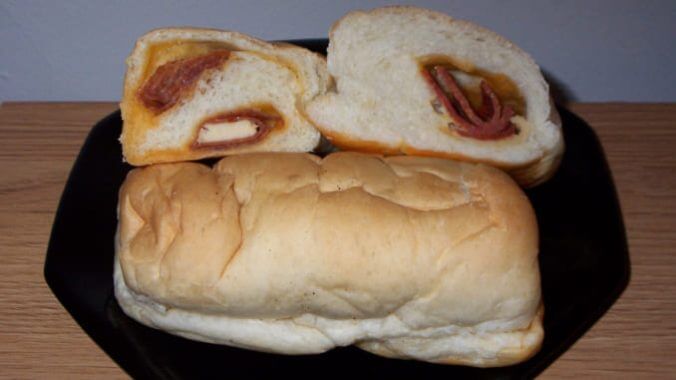How the Humble Pepperoni Roll Became an Appalachian Staple
Photo by Haem85/Creative Commons
There are a lot of stereotypes attached to Appalachia and plenty of preconceived notions about the region’s culinary contributions. In fact, moonshine might be Appalachia’s most illustrious artisanal export. The region is often typecast as isolated, backwards and lacking diversity. But that’s not the reality. The mountain-riddled region extending from southern New York to northern Mississippi has been shaped by a mélange of cultures, from Appalachia’s original inhabitants, including the Cherokee, Shawnee and Haudenosaunee to the waves of European immigrants that started trickling into the hills and hollows of the Appalachian Mountains in the mid-1700s.
These days, the Appalachia’s culinary contributions are also still inspired by the region’s cultural mix. Appalachia’s foraging tradition—driven by delicacies like wild leeks, thick-skinned paw paws and morel mushrooms—is still showcased at farm-to-table restaurants throughout the region. But more niche regional traditions have endured too. Take, for instance, the evolution of pepperoni rolls.
A distinctly West Virginian invention, pepperoni rolls have been a mainstay in the Mountain State for nearly a century. Today, the portable snacks are staple at pizzerias, gas stations and convenience store statewide. And, for purists, there are also a handful of historic Italian bakeries still crafting traditional pepperoni rolls using a recipe perfected in the early 1920s.
Not exactly a sandwich or a traditional calzone, the sturdy rolls consist simply of pepperoni sticks baked into fluffy Italian bread. Officially, credit for the concoction is attributed to Giuseppe “Joseph” Argiro, a baker and coal miner originally from from southern Italy. Born in Calabria, Argiro settled in northern West Virginia—enticed by opportunities in the coal mines surrounding of Fairmont.
The arrival of the Baltimore & Ohio Railroad in the mid-1800s catalyzed the region’s extractive industry, and generated opportunities for immigrants willing to labor in West Virginia’s bituminous coal mines. While employed as a miner, Argiro noticed his co-workers consistently packed two staples for lunch: bread and sticks of pepperoni. He decided to combine the two, focusing on finding a bread recipe with the perfect consistency to encase the spicy pepperoni. When baked together, seasonings from the pepperoni seeped into the bread, providing a distinctive flavor profile. There were other perks too—the rolls didn’t need to be heated to refrigerated, and the durable snacks were affordable for laborers working long shifts in northern West Virginia’s coalfields.
-

-

-

-

-

-

-

-

-

-

-

-

-

-

-

-

-

-

-

-

-

-

-

-

-

-

-

-

-

-

-

-

-

-

-

-

-

-

-

-








































